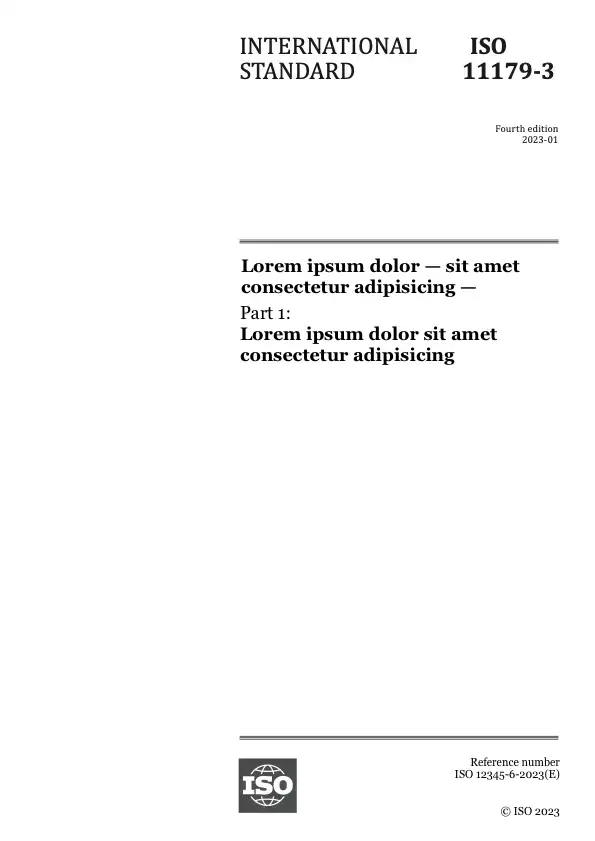Résumé
ISO 17183:2016 specifies the procedure to screen highly contaminated soils to detect organic compounds extractable with isopropanol, including a wide range of fuels, oils, and greases. The method is useful for finding hot spots. It is applicable both in laboratories and for site screening in the field. The working range is approximately 0,01 to 0,3 in absorbance units, corresponding to approximately 500 mg/kg to 10 000 mg/kg of isopropanol-extractable organic compounds in soil.
The light attenuation due to light scattering/absorption approach in this method is designed to quickly screen soil samples using calibration with the most appropriate substance(s) likely to be present on a given site to indicate the concentration levels.
This screening technique is applicable for a broad spectrum of organic compounds, mainly hydrocarbons. Organic compounds are a very broadly defined mixture of compounds, which show their own specific emulsification indices (see Annex A) and a gross emulsification index in a mixture sample, defined primarily by their insolubility in water. The more insoluble the compounds (e.g. non-polar compounds), the higher the response. Hydrocarbons are generally less-reactive and have little polarity. Determination of emulsification indexes uses their non-polar nature to detect organic compounds including a wide range of hydrocarbons from about C8 to about C36.
NOTE This method can also be applied to biological substances such as vegetable oils.
This method is not applicable for determination of specific organic compounds or groups of compounds that may be part of a larger organic compound mixture. As with other screening techniques, it is advisable to confirm a certain percentage of both positive and negative test results, especially when near or above a regulatory action limit or when the presence of background or when interfering organic compounds such as surface active substances are suspected to be present.
This method does not address the evaporation of any volatile organic compound mixtures (i.e., gasoline) during sampling, preparation and detection. Although the screening method can be used for the quantitative detection of volatile hydrocarbons, it is not intended that the method be used for the quantitative determination of volatile petroleum hydrocarbons unless evaporation during sample handling is addressed; the response factor be appropriately corrected, or the method performance be demonstrated on real samples.
If emulsifiers or surface active substances (e.g. detergents) are present, significantly negatively-biased or false negative results can be obtained. If there is any evidence for the presence of surfactances in the soil, this method cannot be applied.
Prévisualiser
Informations générales
-
État actuel: PubliéeDate de publication: 2016-04Stade: Norme internationale confirmée [90.93]
-
Edition: 1
-
Comité technique :ISO/TC 190/SC 3ICS :13.080.10
- RSS mises à jour
Cycle de vie
Vous avez une question?
Consulter notre FAQ
Horaires d’ouverture:
De lundi à vendredi - 09:00-12:00, 14:00-17:00 (UTC+1)
